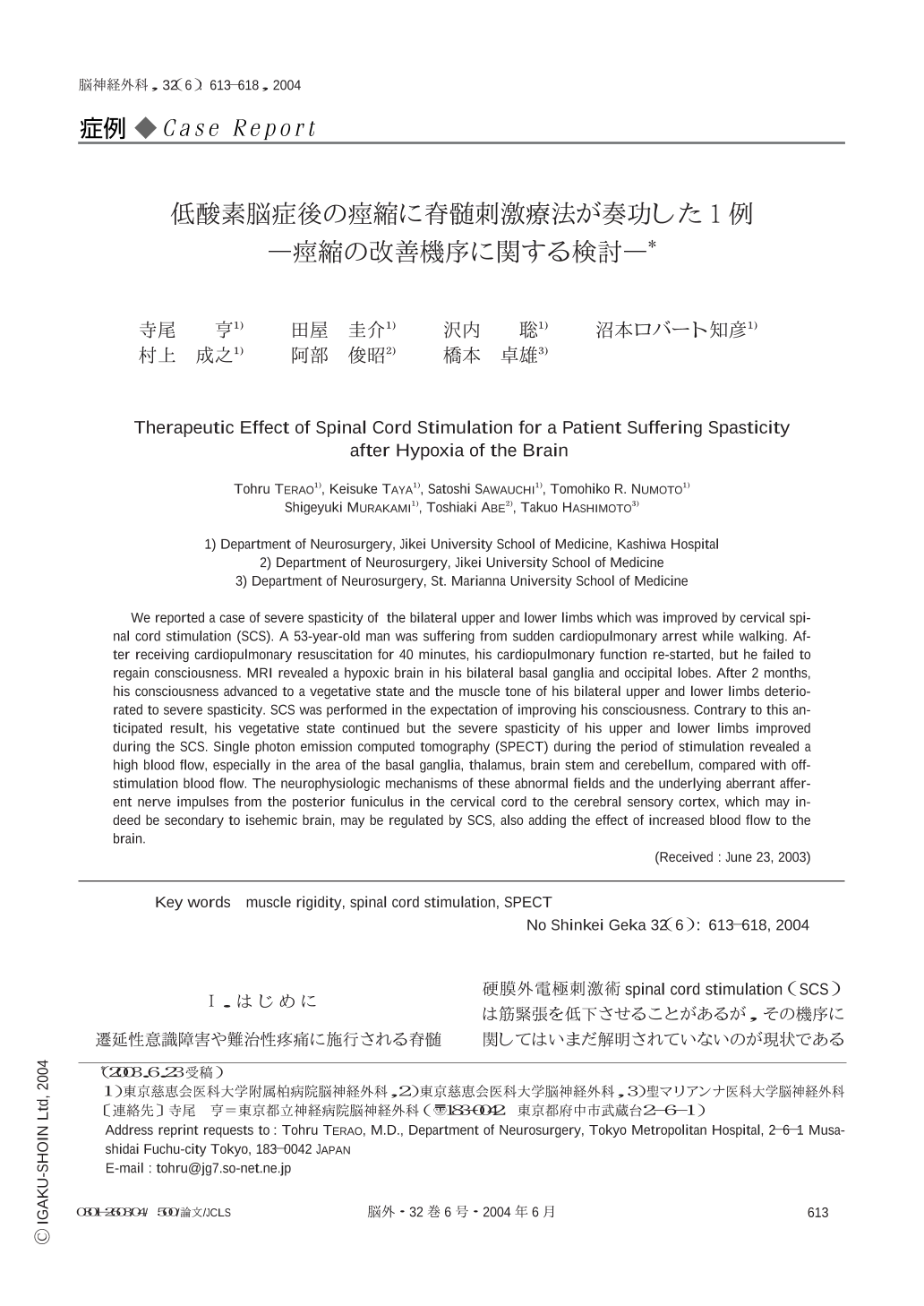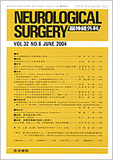Japanese
English
- 有料閲覧
- Abstract 文献概要
- 1ページ目 Look Inside
Ⅰ.はじめに
遷延性意識障害や難治性疼痛に施行される脊髄硬膜外電極刺激術spinal cord stimulation(SCS)は筋緊張を低下させることがあるが,その機序に関してはいまだ解明されていないのが現状である15).今回,われわれは遷延性意識障害の改善を期待して上位頸椎のSCSを施行し,通電後,四肢の痙縮が著明に改善した症例を経験したため,その改善機序を中心に報告する.
We reported a case of severe spasticity of the bilateral upper and lower limbs which was improved by cervical spinal cord stimulation (SCS). A 53-year-old man was suffering from sudden cardiopulmonary arrest while walking. After receiving cardiopulmonary resuscitation for 40 minutes,his cardiopulmonary function re-started,but he failed to regain consciousness. MRI revealed a hypoxic brain in his bilateral basal ganglia and occipital lobes. After 2 months,his consciousness advanced to a vegetative state and the muscle tone of his bilateral upper and lower limbs deteriorated to severe spasticity. SCS was performed in the expectation of improving his consciousness. Contrary to this anticipated result,his vegetative state continued but the severe spasticity of his upper and lower limbs improved during the SCS. Single photon emission computed tomography (SPECT) during the period of stimulation revealed a high blood flow,especially in the area of the basal ganglia,thalamus,brain stem and cerebellum,compared with off-stimulation blood flow. The neurophysiologic mechanisms of these abnormal fields and the underlying aberrant afferent nerve impulses from the posterior funiculus in the cervical cord to the cerebral sensory cortex,which may indeed be secondary to isehemic brain,may be regulated by SCS,also adding the effect of increased blood flow to the brain.

Copyright © 2004, Igaku-Shoin Ltd. All rights reserved.


